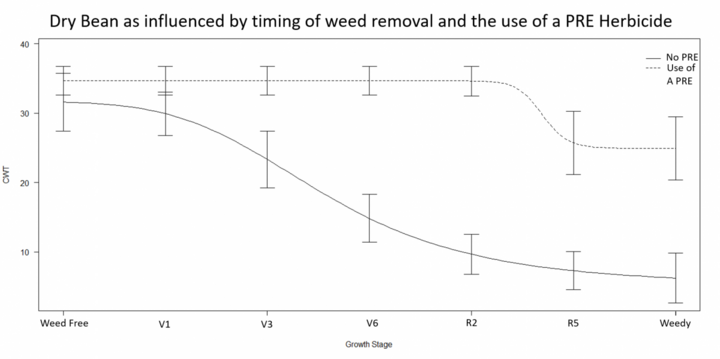There are a lot of reasons to control weeds. Weeds are unsightly, they can interfere with harvest, they can carry crop pathogens or host damaging insects, and most importantly they rob a crop of its yield potential. Weeds do compete with crops and reduce crop yield and crop quality, but how and when?
The traditional answer is that weeds and crops compete for the same resources, light, water, and nutrients, but this is only part of the story. Plants have the ability to detect if another plant is growing nearby. They do this by detecting the light that gets reflected off nearby plants, which is of a different wavelength than light reflected off bare soil. Once weeds are detected, a crop may devote more resources into becoming more competitive, such as by growing taller, and less energy into producing seed. This change can happen early in the season, even before weeds and crop are competing for resources such as water or nutrients. So how soon do weeds need to be controlled? During the 2018 growing season a dry bean study was established to compare how soon after planting crop yield was impacted by weed presence.


- Half of the study received no PRE herbicide treatment; the other half received a field rate of Prowl plus Outlook applied PRE. No POST herbicides were applied.
- Within both plots (with and without a PRE treatment), weeds were removed at different growth stages and then the plots were kept weed free the rest of year by hand.
- The first treatment kept plots weed free from crop emergence through harvest, the second from V1 through harvest, the third kept them weed free beginning at V3, then V6, R2, and R5. Finally, there was also a treatment where the plots remained weedy for the entire year through harvest.
- Even when kept weed free for the entire season, the use of a PRE resulted in higher crop yield.
- Once weeds were allowed to stay in the field past V1, the most significant drops in yield occurred between the PRE and no PRE plots.
A common refrain for weed control is “start clean.” However, even when a field starts clean from a good burndown program or through tillage, a farmer may still be losing yield if they do not invest in a good residual herbicide program applied near planting or at burndown. The use of residual herbicides from the start preserves yield, allows for a more competitive crop when weeds do finally emerge, and is a factor in proactively managing herbicide-resistance.

